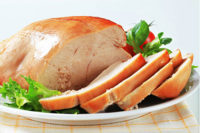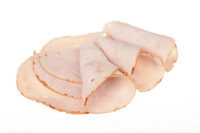The OSU Thermal Processing of Ready-to-Eat (RTE) Meat Products short course will occur April 17-19, 2012, on the Ohio State University campus. The agenda for this three-day course is filled with a variety of topics related to all aspects of producing ready-to-eat meat products.
This course was designed to bring the latest technology related to thermal processing of meat products, from industry, academic and regulatory experts to those involved with assuring that their products are compliant with inspection regulations and with developing new RTE meat products. It is also the goal of this course to teach food safety-related food engineering and microbiological concepts in a way that meat and food scientists can understand and use. In addition to being regulatory compliant and protecting public health, producing safe meat products is good for business health.
This course begins with a review of the microbiology of cooked meat products, to make sure everyone is on the same page regarding the concepts of lag phase, logarithmic growth and lethality of pathogens, such as Listeria monocytogenes and C. perfringens.
We also like to get the regulatory perspective on the control of L. monocytogenes on ready-to-eat meat products, particularly related to recent changes. The FSIS performance standards for lethality and stabilization are also presented and discussed.
From there we move to temperature measurement, as well as data logging and tracking. There is nothing more important to monitoring and documenting product and oven temperatures than proper temperature measurement, and proper training of plant employees on this topic is very important.
The fun then begins for the non-engineers with an overview of heat and mass transfer, however, this presentation does provide a great layperson’s introduction to the underlying physical principles that govern all cooking processes, and which are critical to the safe production of RTE meat products.
A slightly more applied presentation of the principles of equipment and process validation for batch and continuous ovens, discusses the sources of temperature and humidity variation, methods for balancing ovens and preventive maintenance checks. Discussions of more specific cooking processes are discussed in presentations on the fundamentals of continuous thermal processing, thermal processing of slurries with indirect heating systems, and microwave cookery of meat products.
The mechanics of chilling depends on the thermal properties and dimensions of the product, the temperature differential between the product and the chilling medium and the material-handling methods used and these factors that affect chilling are presented with the goal of minimizing the potential biological hazard of C. perfringens growth.
Post-packaging pasteurization of cooked meat products has become very important to destroy vegetative pathogens that contaminate exposed meat products between the cooking process and packaging. This presentation addresses the factors which complicate the development of a safe post-packaging pasteurization process.
The advantages and limitations of various lethality and growth modeling tools and predictive equations are presented. Sources of supporting documentation materials are also presented as well as how to read scientific publications to find publications that are the most supportive of individual processes.
Although not a thermal-processing method, the most important concept for preventing L. monocytogenescontamination on RTE meat products is likely sanitation and the industry-established principles of sanitary facility and equipment design are explained.
One of the most interesting and thought-provoking presentations, regarding food safety beyond guidelines and regulations, address three questions: (1) how do the performance standards for RTE meat products relate to the current state-of-knowledge, (2) what is currently known about various factors that might affect the lethality of pathogens in meat products, and (3) what should be done to account for these complicating factors, now and in the future.






Report Abusive Comment